Yoshinoyama’s Unique Kaeru Tobi Ritual
2021/06/25
Every year on July 7th, the backcountry mountain town of Yoshino is host to a unique ritual whose origin is based around an old legend involving an unfaithful man transformed into a frog. Known as “Kaerutobi” (kaeru = frog, tobi = flight/journey), this light-hearted yet symbolically important event which is sure to delight visitors of all ages with its uniquely performative style and feats of impressive daring by the performers.
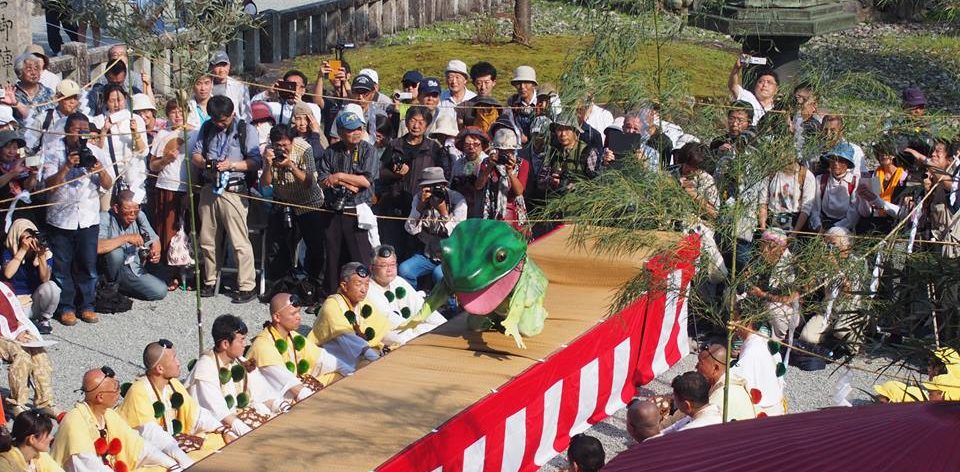
The central character of the ritual, hopping past Shugendo practitioners on its way to Zao-do Hall
This ritual takes place in the Yoshinoyama district of the town, famous for its thousands of cherry blossoms in the spring, but also home to an incredible amount of important history to the formation of the country of Japan.
One such major aspect of history born from this region is the indigenous faith of Shugendo, a tradition based on mountain worship and strict and often dangerous, ascetic practice. For it’s over 1,300 years of history, Shugendo has many legends attributed to it, including the one on which the Kaerutobi Ritual is based.
The Legend
According to this tale, a long time ago there once was a man who insulted the Shugendo practitioners of Yoshino. After this insult, he was suddenly picked up and carried away deep into the mountains by an eagle and left on the side of a cliff from which he could not escape.
As fate would have it, a wandering priest with great diving power came across the man and noticing his predicament, mercifully decided to try and aid him. The priest, using his power granted to him through the Buddhas, transformed the man into a frog, a creature that, while not ideal for the situation, can navigate the treacherous crags of the mountains.
Apparently realizing the 2nd chance he had been given, the man-turned-frog hopped his way down from the deep mountains to Yoshinoyama, eventually making it all the to Kinpusen-ji Temple. There, he prostrated his froggy self before the priests in front of Zao-do Hall, seeking forgiveness and assistance. For his efforts, the man received compassion and was miraculously transformed back into a human through the power of Shugendo.
The Festive Performance
The Kaerutobi Ritual is a sort of a highly entertaining reenactment of the above tale, involving a group of locals carrying a very heavy palanquin (usually referred to as an “omikoshi”) around the ridgeline temple district which bears an actor dressed in a frog costume. The movement of the palanquin up and down the steep ridgeline central road symbolizes the frog’s journey from the legend. A frog is not the only thing the carrying team must bear either, as there is also a large drum inside with a drummer who both helps liven up the procession and keeps the pace of the team.
One impressive feat that the bearers must overcome is carrying the palanquin up a stairway (traditionally under Niomon Gate) to Kinpusen-ji Temple. Anybody who has ever tried carrying one of these heavy wooden things can attest to how difficult the task actually is (even on flat ground) and how much teamwork it requires; if one part of the team fails, the rest of the members could be easily crushed.
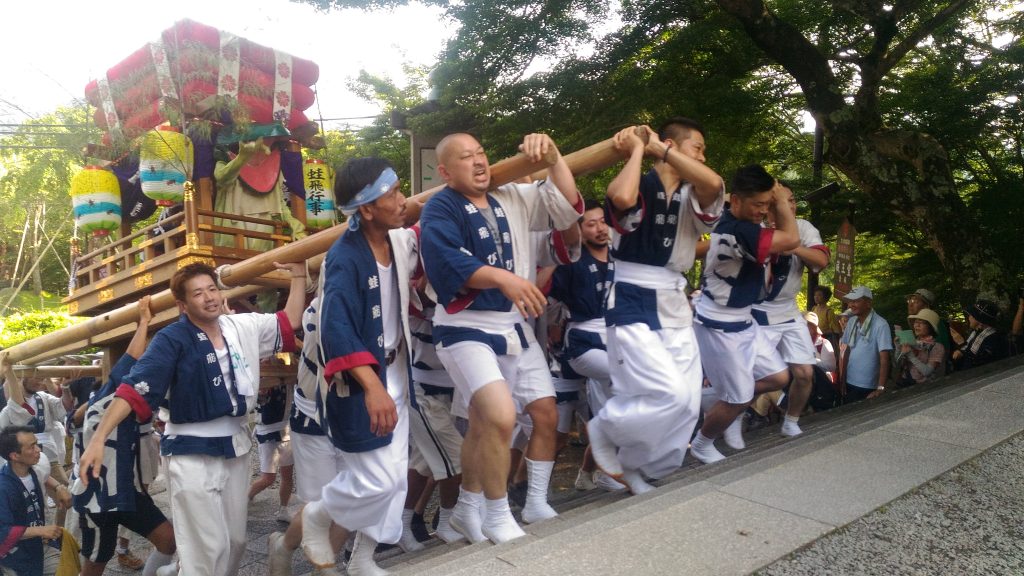
Climbing a stairway up to Zao-do Hall
Risking serious injury or death is often a key aspect of many Japanese festivals and religious rituals (a tantamount example being Nagano Prefecture’s Onbashira Festival) because it is a clear demonstration of the participants and communities’ devotion to what they are doing. As such, the Kaerutobi Ritual is a community event involving many people that support the team’s progress in various ways, from acting as standby carriers, to preparing food and refreshments for everyone involved.
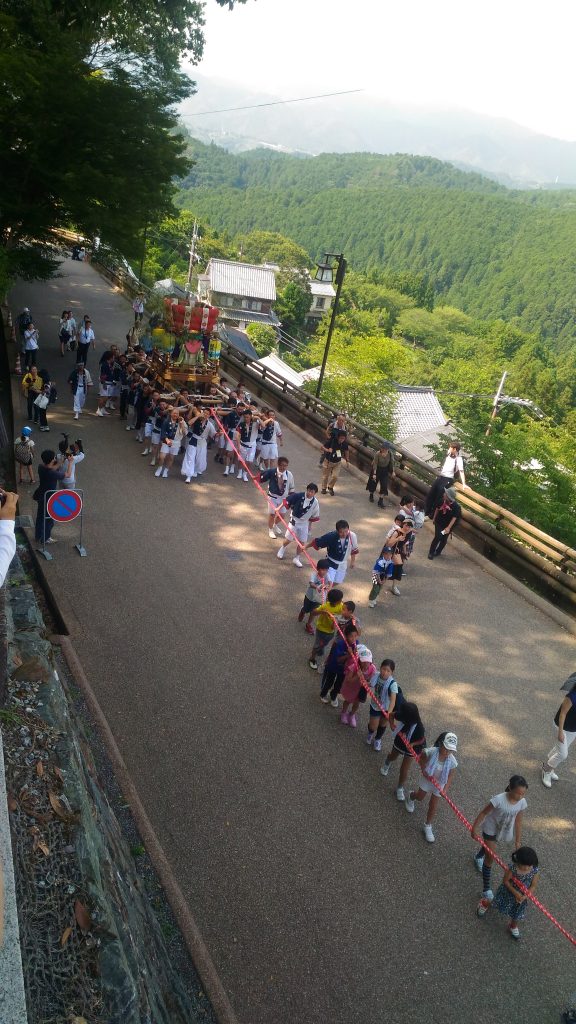
Local children are encouraged to participate in the ritual at some points.
Eventually, just as in the legend, the team comes before Zao-do Hall and the frog hops on down from the palanquin to a specially built raised walkway which he uses to amusingly move about and prostrate before high-ranking priests seated at the ends of each section. The spectacle of the the two very different figures interacting can be a pretty amusing sight to observe, and one that is almost certainly unique to this event. At the end of this ritual, the head of the frog costume is removed, revealing the man beneath and symbolizing his transformation back to human form.
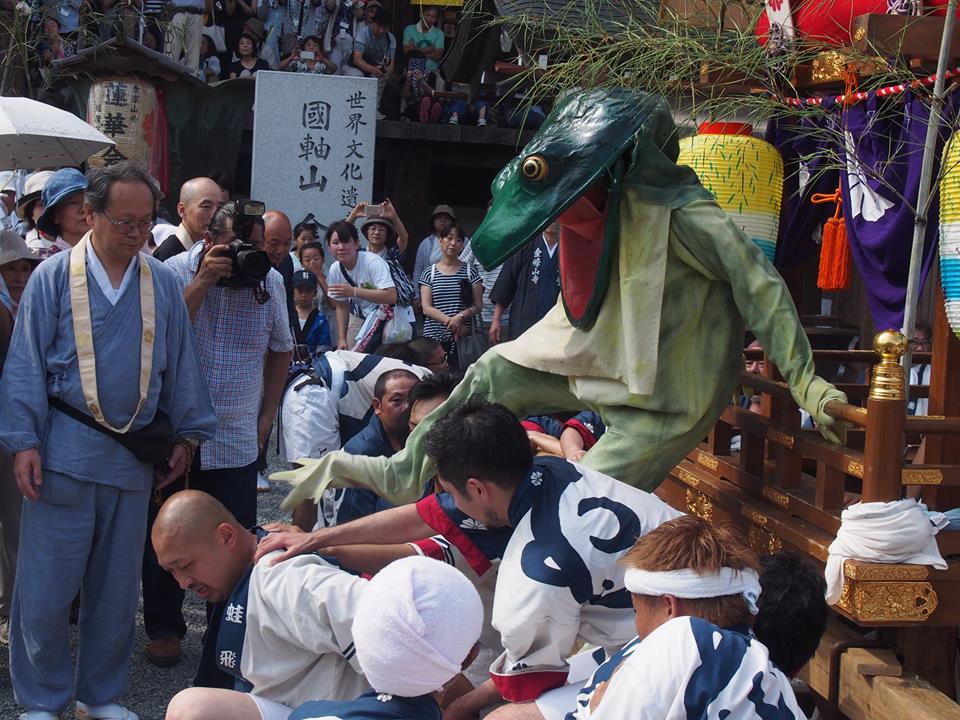
The titular frog disembarks in front of Zao-do Hall
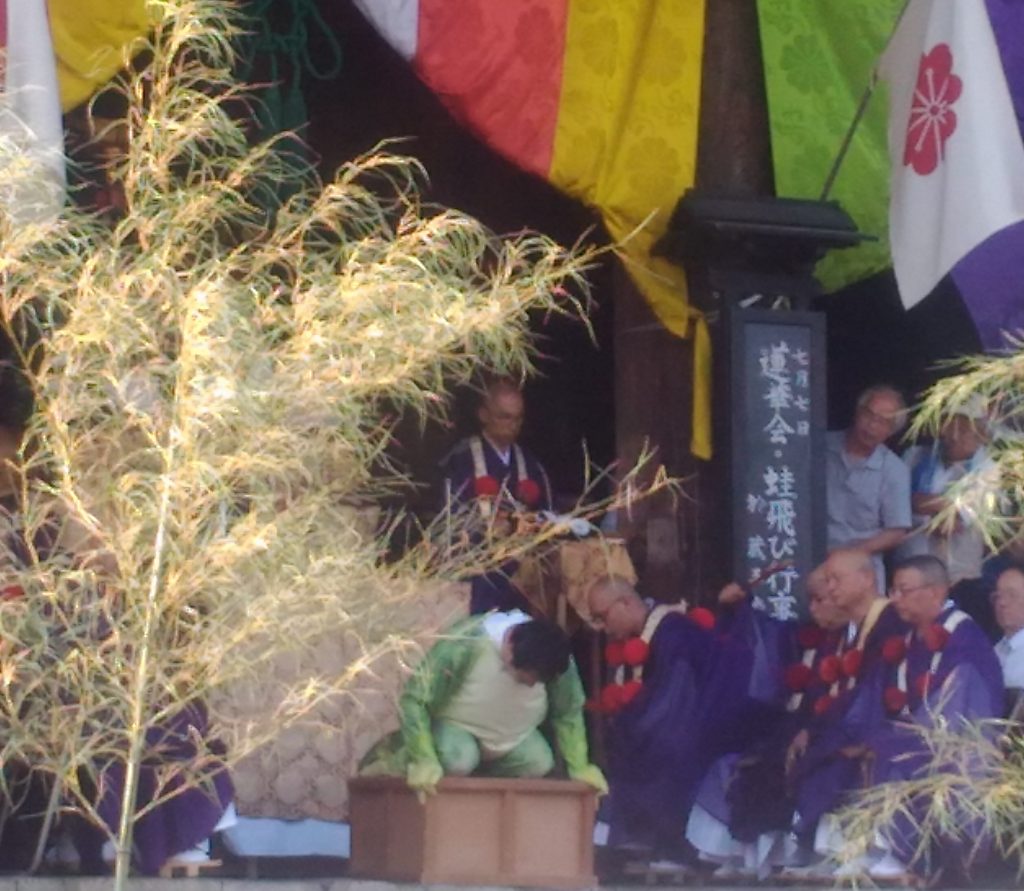
The man regains his human form at the end of the ritual
It is worth noting that most of the ritual, though done on the grounds of a sacred temple, is quite the light-hearted affair, with the audience often laughing at the spectacle of the frog and giving an appreciate round of applause to the whole proceeding after the frog’s final transformation. Photography and video is also allowed, but be aware that if you want to get a good view of the activities in front of Zao-do Hall, you will probably need to arrive pretty early (well before the frog palanquin procession ends).
About the Ritual:
The Kaeru Tobi Ritual takes place every year in the Yoshinoyama area on July 7th. Typically the festival officially begins at 15:00 (3pm) with a procession of Shugendo yamabushi (practitioners) which starts in front of Yoshinoyama Station (the top of the ropeway line), soon after followed by the frog palanquin. At 4pm, the frog arrives at Zao-do Hall and the final part of the ritual begins. At 5pm, there is a special large goma fire ceremony that is done in the same area as the ritual that is also worth catching if you have time.
Yoshinoyama is accessible via Kintetsu Yoshino Station as the last stop on the Yoshino Line which runs from Osaka Abenobashi Station in Osaka City.

01
FIND YOUR FAVORITE
TRIP ON OUR WEBSITE.
SEND US AN INQUIRY.

02
PERSONALIZE THE TRIP
TO YOUR INTERESTS
WITH OUR CONSULTANT.

03
20% DEPOSIT TO CONFIRM.
BALANCE PRIOR TO ARRIVAL.
PAYMENT BY CC OR TT.

04
WE WILL
MEET YOU
AT THE AIRPORT.

05
DISCOVER THE
TREASURES!